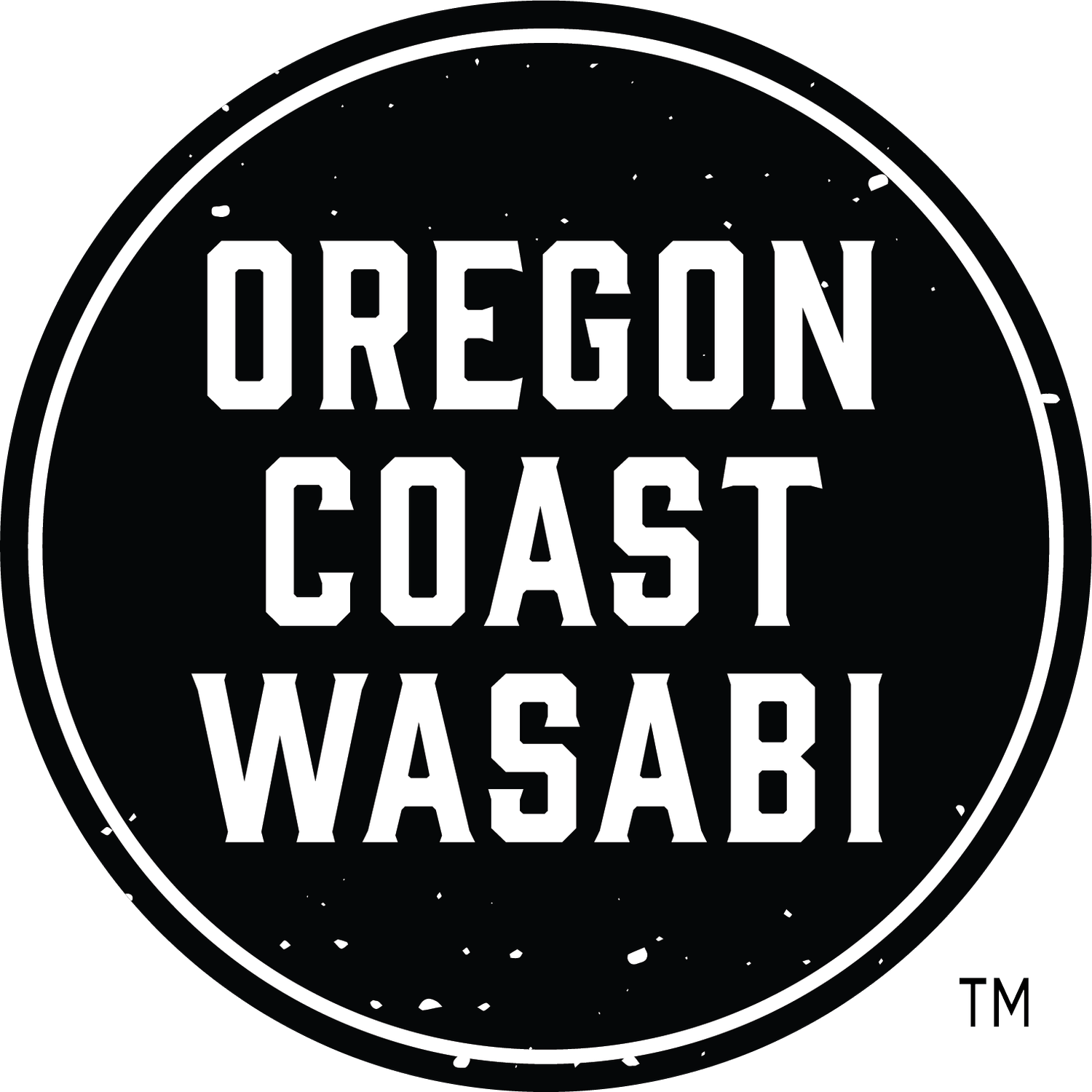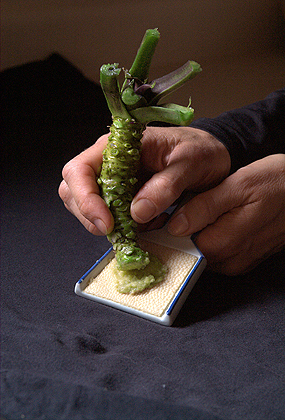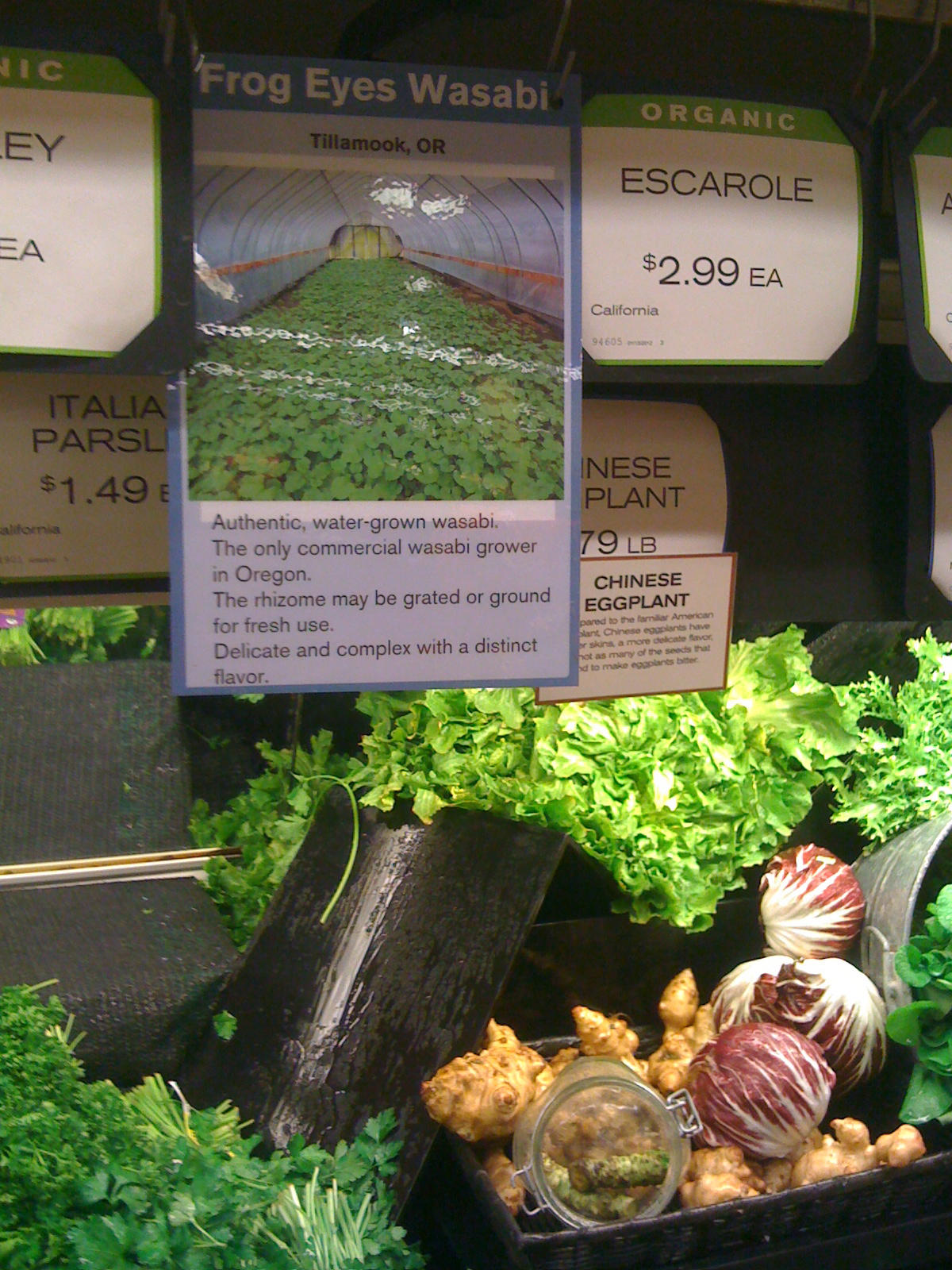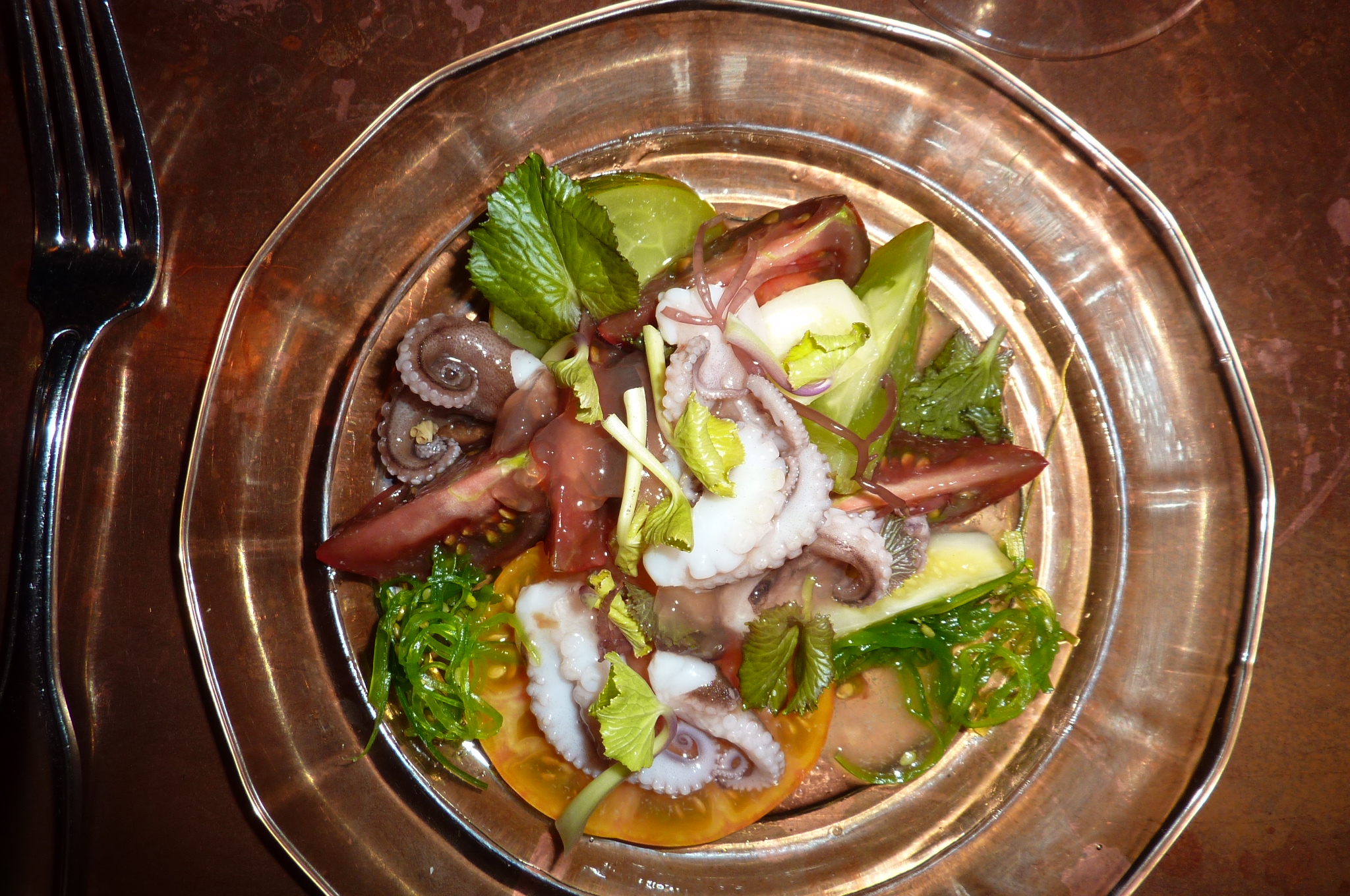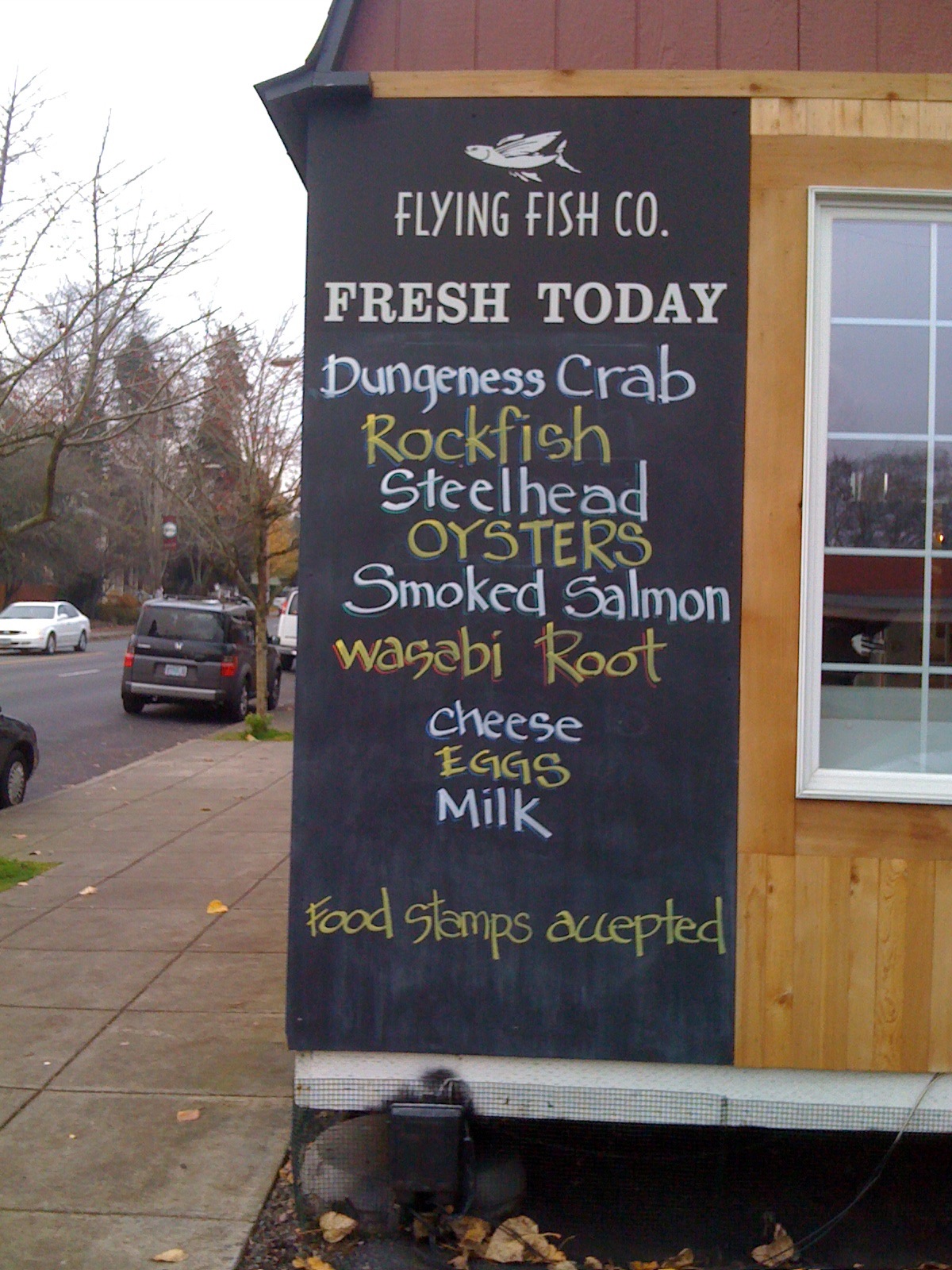Wasabi farming is more than just a hot ‘n’ spicy variation of niche farming. One of my favorite farm-related activities is customer relations. Occasionally, Jennifer and I host events at customers’ stores or restaurants. At restaurants we discuss wasabi’s properties with diners, chefs and often, cooking school students. At grocery stores we offer fresh wasabi samples to the store’s customers. The samples are often paired with fish as wasabi a la carte is rather potent. We set up a small display including a bouquet of leaves and stems and then let the smiles begin.
Truth be told, I thoroughly enjoy these events. Providing a product I’ve grown and sharing it is my favorite aspect of growing food. I smile just as much as the customers and I depart the store with the feeling that only an abundance of generosity can create. Although most farm activities are unglamorous, hosting a demo kiosk is no more enchanting than digging ditches. It’s grueling, repetitive and often humbling.
I staff a station exactly like the ubiquitous grocery store sample desks. I’m that person which interrupts your shopping experience to ask if you want to sample something.
Many customers generally ignore or bypass these sample kiosks. I have a much higher success rate. Indeed, there’s usually a queue. You see, I have two secret weapons: one is the product. Second, I’ve got farm cred. Essentially I stand at a little desk and cheerily ask, “would you like to try fresh wasabi”? It is audibly inquisitive. The words “fresh” and “wasabi” are usually not associated. The majority of exchanges follow like this:
Customer: “yes”/ or “no”. (Actually I’m indifferent to their verbal reaction. If they make eye contact, there’s a good chance they will sample the wasabi.)
Me: “Yes, fresh-grated wasabi. I’m the farmer.” Second weapon deployed. People really engage when I inform them that I’m the farmer.
Customer: [big smile.] “Really!? You grow wasabi?!”
Me: “Yes. I would be honored if you’d try this and tell me what you think.”
Customer: “it’s a plant?”
Me: “Yes. The entire plant is edible” I then show them the leaves and stems and cut off a few pieces of each.
Customer: [samples the wasabi] Cheeks flush. Smile erupts.
Me: beams right back!
Customer: “If I buy it, how long does it last.”
Me: “What you just had was lying at the bottom of my refrigerator neglected for two months.”
Customer: [incredulously] “2 months!!!!?”
Me: “Or longer. I’m not quite certain, but at least, yes.”
Then, I grate wasabi fresh with a different rhizome, harvested within the week. I allow them to try that and taste test. It’s of course indistinguishable in taste than the 2-month old wasabi.
The wasabi plant is quite amazing. In it’s unaltered state, meaning ungrated, the flavor and heat remains unblemished for months - provided it’s kept cold and damp. (Officially, we state three weeks, but read on.) At about week three, the rhizome will start growing again, with white shoots off the top. These shoots are perfectly edible and quite tasty.
However, once it’s grated, the heat and flavor evaporate from the paste in about half an hour. It has to do with breaking the cell walls (maceration). Once the rhizome is grated and the cell walls broken, the heat and flavor are volatile. Thus, the plant is both robust for storage, but delicate for serving; somewhat like wine. It will keep for a long time, but once uncorked, it’s time to celebrate.
There’s still an outstanding question: how long exactly does it last?
We found these rhizomes in the refrigerator that are approximately 8 months old. They were kept in a sealed Ziploc bag. No respiration. No water, or moisture.
We planted 3 of them. They are growing.
We ate one of them. It’s taste was a bit shallower than a fresh rhizome, and the heat less intense, but it was edible. I wouldn’t prefer it on sashimi, but it would be fine in a noodle dish. (this one is fabulous, better than mine below.)
Now the next time you see a wasabi farmer at a demo, you won’t have to ask how long it lasts. You can use that time to ask for a second helping; I promise I’ll give you one.

